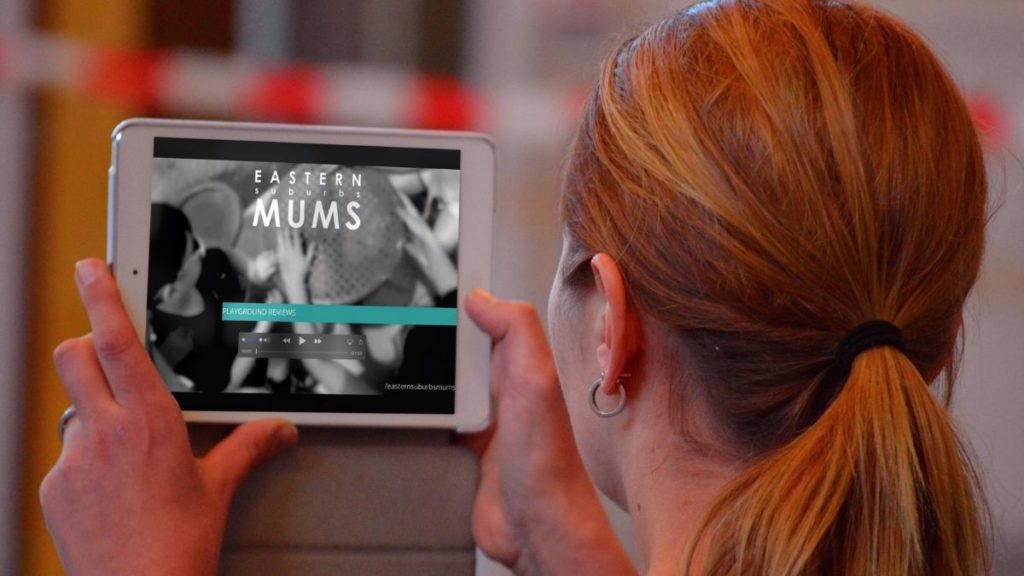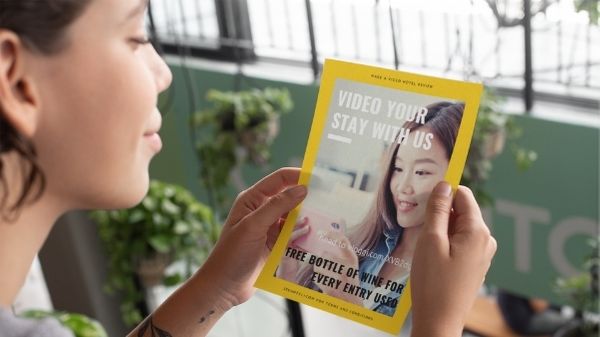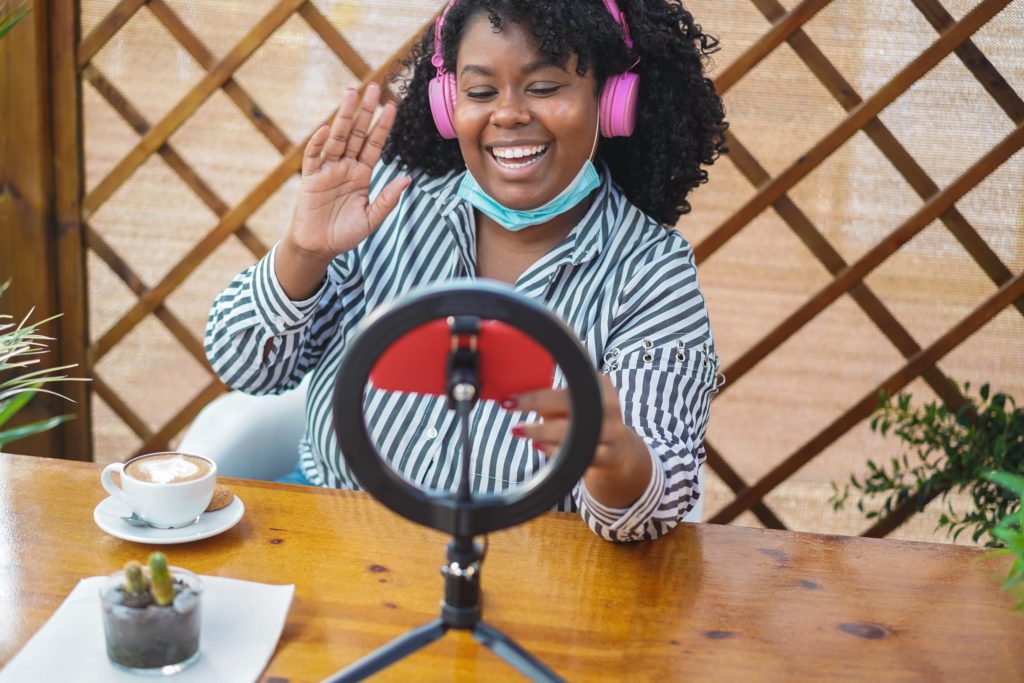5 easy ways to source your user-generated video content


Most of our customers use Vloggi for social media community engagement videos. The power of user-generated video campaigns (UGV) is the ability to combine user-generated content with the reach of video.
User-generated video campaigns have the real benefit of being controlled authenticity – you get to see inside your customers’ heads by seeing your product through the lens of their smartphone camera.
In fact, user-generated video (UGV) is marketing’s holy grail. It combines the conversion power of video (around 9.2 times that of images) with that of user-generated content (four times the click-through rates of professional content). Yet only 16% of brands have a UGC strategy and even fewer UGV, according to Tintup.
This is why 95% of marketing executives we surveyed said they wanted to do more customer-sourced videos in 2021. The barrier for them was a mix of complexity and cost of running user-generated video campaigns.The question we get asked a lot when launching user-generated video campaigns for our partners is where to find video contributors. The answer lies in good, old-fashioned outreach.

The most common way marketers run user-generated video campaigns is by hashtag. Pick a hashtag, build a microsite for term and conditions, then wait for users to enter the competition by using the hashtag. This is a simple way to solicit entries and can be implicit consent to re-use content for marketing.
Additionally, video contests often take a long time for a junior marketer to sift through and produce a shortlist for the senior members of the team to review. In fact, The average execution time on a video campaign from brief to publication is over 13 weeks, according to Statista.
Use your customers’ own footage instead.
With the latest generation of user-generated video campaign tools like Vloggi, marketers can now source footage directly from their brand’s customers. With 2.5 billion people around the world holding high-definition cameras with them at all times, it is a rich resource from which to mine for authentic video. Micro-influencer marketing is now becoming mainstream, according to Exchange4Media.
Indeed, major advertising agencies like VMLY&R value content created by those at the “bottom” of the influencer scale (those with fewest followers) to be more relevant for consumers and more authentic than celebrities, paid creative content or mega influencers.
So with Vloggi, you can easily launch a campaign, with a unique URL or QR code to share with your audience, but where to find the contributors in the first place?
The answer lies in good, old-fashioned outreach.
If you have a great product, you will have loyal customers. If you have a community group, then your members are loyal to your cause or your mission. These are the first places to reach out. Here are some more tips on where to find community engagement for your user-generated video campaign.
Here are five ways to source user-generated content:
Facebook groups are probably already centred around your products. There will be superfans there swapping advice and tips on the use and news of your products. If your brand has Facebook groups dedicated to it, you already have a pre-built supply of your brand’s biggest fans.
A Facebook group is different from a Facebook page: a Facebook page is an official profile of your business while a Facebook group is a place where people discuss and share their passion for similar interests. Facebook groups are a great way to indirectly promote your business and build loyal followers.

You can also find those groups that are related to the activity your product relates to, rather than then brand itself. For example, iconic brands like Dyson, Apple and Ducati have hundreds of Facebook groups dedicated to their product. For smaller brands, try searching out groups like “Mums who clean” if you’re a vacuum cleaning brand. The kind of user-generated video campaigns that work for community engagement can be quite different to pure commercial brands.
The way to provide value to a group for community engagement videos is through storytelling, especially visual storytelling. Facebook groups are under increasing pressure to host more video content on their group’s pages, so will welcome’s any offer of free content, so long as it is relevant and not salesy.
Sydney’s premier mothers’ Facebook group, Eastern Suburbs Mums uses Vloggi to produce video playground reviews. Its self-styled “Mummy Vloggers” are ordinary mums who visit playgrounds with their kids. The site uses Vloggi to source new mummy bloggers and then to produce their uploaded clips into compelling video content.
This way it is a two-way conversation with rich content being produced for and by the members of the closed group. Prizes are added to further incentivise.
Reseach by Tailwind found that brands using Instagram contests in their marketing strategy will grow their followers on average 70% faster than those without. But if you’re trying to source video, it gets a lot harder.
Instagram contests are largely image-based
Today contests on Instagram are 95% image-based, with very few video submissions. This is because taking a beautifully composed photo is easier than a video.
Another problem is that Instagram video stories are temporary, meaning marketers miss most of the best content posted unless they use tag listening software like Stackla or Crowdriff.
But if you run a video contest on a platform like Vloggi, you can use the uploader tool right within Instagram. Depending on how large your following is, there are two options:
Australian beauty, wellness and lifestyle publication Caviar Feeling uses Vloggi to solicit beauty questions for its editor, Ana Freitas to answer.
The majority of its new interaction with readers is via Pinterest or Instagram, so the publication added Vloggi uploader link to its Pinterest landing page for direct click-throughs.
An easy way to recruit video contributors for brands with a larger budget is to boost engaging posts on existing social media. Create a post with the type of video you’d ideally like your contributors to upload for you.
This way your potential uploaders know what you as the brand expect. This is central to building a successful community engagement video campaign for social media.

JAX Tyres & Autos were targeting 4×4 owners in Australia. They ran a social media contest with Vloggi entitled Show Us What you Got, where 4WD owners showed their car driving up and down mountains, through mud and generally showing off the capability of their tyres.
JAX produced a 30-second teaser video in its brand colours to promote entry into its JAX Tribe contest.
JAX uses content posted by their customers in almost every video it posts back to Facebook and other social media.
The tyre and automotive brand has seen Facebook following rise by 3% in a month thanks to engaging 4×4 video content.
So this is a great strategy to adopt in your own campaigns to increase engagement and get more people to share and tag your product in videos.
Vloggi is a platform that sources user-generated video to create branded micro-content that can then be manipulated in the cloud and stored and managed for publication or sharing.
It combines a crowdsourcing system, a video production tool and a dynamic video assembler.

If you have an active open rate for your newsletter, or if you send follow-up emails to loyal customer, then you have another route to recruiting superfans. This is a way to really maximise community engagement video creation for social media.
Hotels can use physical posters to solicit video uploads by happy guests[/caption]
Most businesses use a system like the Net Promoter Score to gain insights into how happy their customers are. Others run instant review workflows receive testimonials.
Integration of review data with customer videos of products in use is a crucial new tool for businesses. Not only do you capture the sentiments of customers, but also real footage of your product in action.
Vloggi Integrate is an Open API product in use by many online directories and booking sites to automate their video review creation.
It interfaces with existing customer data sets to seamlessly create review videos from customer footage.
If you are a physical business, like a cafe, restaurant or hotel, then you can incentivise current guests to upload their video right there and then. With tools like Vloggi’s QR code generator, guests just need to scan and be taken straight to the video uploader.
If you need glowing reviews or perfectly produced video for social media, then influencers are your best route.
Influencers with large followings can command $100,000 for posts on YouTube or Instagram. The reason is that they are essentially freelance advertising agencies, creating promotional videos to order.
If you have a brand that requires positive coverage and doesn’t have customers willing to provide testimonials, then using an influencer-sourcing agency like Tribe or Vamp is a perfect solution.
You provide a brief and either run the brief as a contest, selecting only the most on-message entry, or engage directly with the influencer.
According to the influencer management platform Traackr, 72 percent of major brands say they are dedicating a sizable portion of their marketing budgets to influencers — people with a strong relationship to an audience who can heavily sway decisions like purchasing habits.
Fashion bloggers and gym instructors are among the industry sectors who are heavy users of paid influencers.

Remember when reaching out to people, think about your audience. What would encourage or help give people a reason to submit videos. Can you add an incentive? Is there a deadline to create a sense of urgency? Have you made your ask simple? Reach out using as many different methods as possible and understand that not everyone will respond. A 5% response rate equals success.